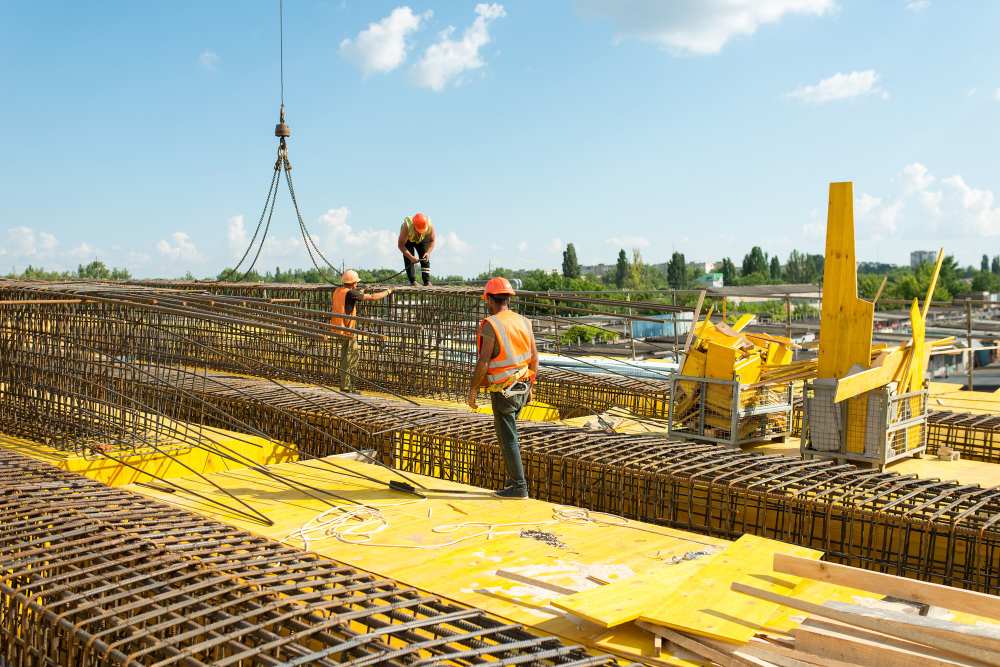Building Tomorrow’s Heavy Civil Infrastructure with Advanced Technology

Heavy civil infrastructure is the backbone of modern economies, supporting the movement of goods, people, and resources across continents. From dams and waterways to railroads, airports, and ports, these structures are critical to global connectivity and economic stability. However, increasing demands for efficiency, safety, and sustainability are reshaping how these infrastructures are built and maintained.
Thanks to cutting-edge technologies like Building Information Modeling (BIM), AI-driven project management, smart infrastructure, and sustainable construction practices, the future of heavy civil infrastructure is being revolutionized. This article explores how these advancements are transforming construction and operations across various sectors of heavy infrastructure.
Dams and waterways play a key role in water resource management, flood control, irrigation, and hydropower generation. As climate change intensifies, these structures must be designed for long-term resilience.
Key Innovations in Dams and Waterways Construction:
Building Information Modeling (BIM): Engineers use 3D models to simulate water flow, flood risks, and structural performance, ensuring safety and efficiency.
Smart Water Management Systems: IoT-enabled sensors monitor water levels, pressure, and structural integrity in real time, preventing potential failures.
Sustainability Initiatives:
Use of recycled materials and renewable energy integration.
Wildlife protection measures like fish ladders.
Impact:
These innovations are helping create safer, smarter, and more sustainable dams and waterways that support growing populations and environmental conservation efforts.
Railroads remain a key mode of transportation for passengers and freight, yet they must evolve to meet the demand for high-speed and sustainable mobility.
Technologies Transforming Railroad Construction:
BIM for Precision Rail Design: Ensures optimized tracks, bridges, and tunnels for safety and speed.
Smart Rail Systems: IoT-enabled sensors track conditions, monitor train performance, and automate speed control for accident prevention.
Sustainable Practices:
Shift towards electric and hybrid trains.
Use of recycled construction materials.
Impact:
Integrating smart technologies and sustainable materials is making rail transport faster, safer, and greener, positioning it as the future of eco-friendly mobility.
With global air travel rising, airports must accommodate increasing passenger numbers, larger aircraft, and enhanced security measures.
Key Innovations in Airport Construction:
BIM for Collaborative Airport Design: Enables seamless integration of HVAC, security, and infrastructure systems.
Smart Infrastructure:
IoT monitors passenger flow, tracks luggage, and optimizes energy usage.
Biometric screening enhances security and speeds up boarding.
Sustainability Measures:
Use of energy-efficient terminals and recycled materials.
Integration of water-saving technologies.
Impact:
By adopting these innovations, airports are becoming smarter, more efficient, and more passenger-friendly, ensuring seamless travel experiences for millions globally.
Ports handle over 80% of global trade, making their efficiency and sustainability crucial for the global economy.
Innovations in Ports and Harbors Construction:
BIM for Port Design: Creates 3D models to optimize cargo logistics, vessel traffic, and infrastructure planning.
Smart Port Technologies:
IoT-enabled cargo tracking.
Automated cranes and AI-driven logistics management for enhanced efficiency.
Sustainability Efforts:
Use of renewable energy.
Shore power systems to reduce emissions from docked ships.
Impact:
Smart technologies and eco-friendly practices are making ports more efficient, secure, and sustainable, enabling them to meet growing global trade demands.
As construction demands evolve, Virtual Delivery Centers (VDCs) are enabling companies to access specialized expertise, streamline project execution, and integrate advanced technology without high overhead costs.
How VDCs Support Heavy Civil Infrastructure:
On-Demand Engineering Talent: Rapid access to BIM specialists, AI experts, and sustainability consultants.
AI-Driven Project Management: Automates risk assessment, cost analysis, and scheduling.
Smart Infrastructure Deployment: Implements IoT solutions for real-time monitoring and predictive maintenance.
Cost-Effective Scalability: Helps construction firms scale operations up or down without major investments.
Sustainability and Compliance: Supports green building initiatives and regulatory compliance.
Impact:
By leveraging VDCs, heavy civil infrastructure projects can be executed with greater efficiency, reduced costs, and enhanced sustainability.
The future of heavy civil infrastructure is being shaped by innovation and sustainability. From dams and railroads to airports and ports, the adoption of BIM, AI-driven project management, smart infrastructure, and sustainable construction practices is transforming how we build, manage, and maintain these essential structures.
As global populations grow and urbanization expands, heavy civil infrastructure must adapt to meet new challenges. By embracing technology and Virtual Delivery Centers (VDCs), developers can build safer, smarter, and more sustainable infrastructures that support economic growth, environmental protection, and global connectivity.
Is Your Infrastructure Project Ready for the Future?
Explore how Virtual Delivery Centers and AI-driven solutions can revolutionize your heavy civil projects today.

For modern telecom enterprises, delivering exceptional QoS is no longer optional—it’s a brand differentiator and a strategic lever for growth. Static provisioning models won’t cut it in a world of hyper-dynamic data usage.